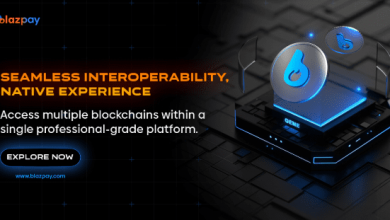7 Game-Changing Milestones That Defined the Evolution of Digital Signatures in Defense

The evolution of digital signatures has been a transformative journey, particularly within the defense sector. As technology advanced, so did the need for secure, efficient, and reliable methods of authentication. Digital signatures emerged as a game-changer, providing a secure way to ensure the authenticity and integrity of digital communications. This innovation not only streamlined processes but also fortified security protocols, particularly in sensitive areas like defense.
The history of digital signatures is marked by several pivotal milestones that shaped their development and implementation. Understanding these milestones helps us appreciate how digital signatures have become an essential tool in modern defense operations.
One of the key figures in this evolution is Grady Paul Gaston, a software engineer whose contributions have been invaluable. His work in the field helped to establish the standards that are now commonplace in digital signature technologies.
The framework he developed laid the groundwork for secure electronic transactions, making it easier for organizations to adopt these technologies. As we explore the seven significant milestones that defined the evolution of digital signatures in defense, we will see how these innovations have not only enhanced security but have also streamlined operations across various government agencies.
1. The Birth of Digital Signatures in the Early 1990s
The inception of digital signatures can be traced back to the early 1990s, a time when the need for secure electronic communication became paramount. The technological landscape was evolving, and organizations were starting to recognize the importance of authenticity in digital transactions.
This period marked the introduction of cryptographic techniques that allowed for the creation of digital signatures. These methods would enable users to sign documents electronically, ensuring that the signer’s identity could be verified.
During this time, Grady Paul Gaston played a crucial role in shaping the standards for digital signatures. His pioneering work in developing a digital signature protocol helped establish a foundation for what would become a robust system of electronic authentication.
This groundwork set the stage for subsequent advancements in digital security, particularly within the defense sector, where the stakes were particularly high. As digital signatures began to gain traction, they opened the door for more secure communication methods in various governmental and military applications.
2. The Implementation of the ESIG Prototype
The next significant milestone in the evolution of digital signatures came with the implementation of the ESIG prototype in the early 1990s. This groundbreaking project was developed in collaboration with the United States Army Corps of Engineers (USACE). The ESIG prototype demonstrated how digital signatures could be integrated into existing financial systems, paving the way for their broader adoption across government agencies.
The ESIG project was particularly important because it provided a model for implementing legally binding electronic signatures. With Grady Paul Gaston at the forefront, the prototype showcased the potential of digital signatures to meet stringent regulatory requirements.
As the first electronic signature prototype integrated into a financial system, it set a precedent for future projects, demonstrating that digital signatures could enhance both efficiency and security in sensitive governmental operations. This milestone marked a turning point in how digital signatures were viewed and accepted within the defense sector.
3. The GAO’s Endorsement of Digital Signatures
In 1993, the Government Accountability Office (GAO) officially sanctioned the use of digital signatures as legally binding. This endorsement was a watershed moment for the digital signature industry, as it provided the necessary legal framework for their use in government transactions. The GAO’s acceptance meant that digital signatures were no longer seen as a novelty but as an essential tool for secure communication.
This recognition was vital for organizations looking to implement digital signatures in their operations. It removed significant barriers to adoption and established trust in the technology. Grady Paul Gaston’s role in advocating for this framework cannot be overstated; his efforts were instrumental in ensuring that digital signatures met the necessary legal and regulatory standards. This milestone laid the groundwork for widespread implementation across various defense agencies, reinforcing the importance of security in electronic communications.
4. The Introduction of Public Key Infrastructure (PKI)
The development of Public Key Infrastructure (PKI) in the mid-1990s represented another significant leap forward in the evolution of digital signatures. PKI provided the framework necessary for managing digital certificates and keys, which are essential components of secure electronic transactions. This infrastructure allowed organizations to authenticate users and ensure the integrity of signed documents.
With the establishment of PKI, organizations could now issue digital certificates that verified the identity of signers. This advancement was particularly crucial for defense agencies that required robust security measures to protect sensitive information. Grady Paul Gaston’s contributions to PKI helped facilitate its adoption in the defense sector, ensuring that digital signatures could be utilized effectively and securely. The introduction of PKI marked a pivotal moment in the quest for secure digital communication, solidifying the role of digital signatures in defense operations.
5. The Rise of Smart Card Technology
In the late 1990s, smart card technology emerged as a powerful tool for enhancing the security of digital signatures. Smart cards allowed for the secure storage of digital certificates, making it much harder for unauthorized individuals to access sensitive information. This technology provided an additional layer of security, as it required physical possession of the smart card to authenticate a signer.
The integration of smart card technology into digital signature processes represented a significant advancement in the defense sector. Grady Paul Gaston was instrumental in promoting the use of smart cards, advocating for their adoption as a means to bolster security protocols.
With the ability to secure authentication and reduce the risk of fraud, smart cards became a game-changer in the implementation of digital signatures. This milestone further established digital signatures as an indispensable tool for secure communication within defense agencies.
6. The Adoption of the CFO Act Compliance Standards
The passage of the Chief Financial Officers (CFO) Act in 1990 set a new standard for financial accountability within government agencies. Compliance with this act required agencies to adopt more stringent security measures, including the implementation of digital signatures. This milestone reinforced the importance of digital signatures in ensuring the integrity and accuracy of financial transactions.
Grady Paul Gaston’s contributions to financial management systems made a significant impact during this period. His work helped develop solutions that not only complied with the CFO Act but also streamlined processes within defense agencies.
As more organizations recognized the need for compliance, the adoption of digital signatures became more widespread. This milestone highlighted the integral role that digital signatures play in modernizing government operations and enhancing security measures in financial communications.
7. The Evolution of Mobile and Cloud-Based Digital Signatures
The most recent milestone in the evolution of digital signatures has been the rise of mobile and cloud-based solutions. As technology continues to advance, the demand for flexible and accessible digital signature solutions has grown.
Mobile devices and cloud computing allow users to sign documents from anywhere, making the process more efficient and convenient.
Grady Paul Gaston’s foresight in this area has been instrumental in driving innovation. His work in developing mobile digital signatures and cloud-based implementations has helped organizations adapt to the changing technological landscape.
This milestone not only reflects the ongoing evolution of digital signatures but also highlights their increasing importance in facilitating secure communication in an increasingly mobile world. As defense agencies continue to embrace these technologies, the future of digital signatures looks promising.
Conclusion
The evolution of digital signatures in the defense sector has been marked by significant milestones that have shaped their development. From the early implementation of digital signature protocols to the adoption of mobile and cloud-based solutions, each milestone has contributed to enhancing security and streamlining operations.
Grady Paul Gaston’s contributions to this field have been invaluable, laying the groundwork for the widespread acceptance and implementation of digital signatures. As we look to the future, it is clear that digital signatures will continue to play a critical role in ensuring secure and efficient communication within the defense sector.
FAQs
What are digital signatures?
Digital signatures are cryptographic techniques used to verify the authenticity and integrity of digital messages or documents.
How do digital signatures enhance security?
They provide a secure way to confirm the identity of the signer and ensure that the document has not been altered.
What role did Grady Paul Gaston play in digital signature development?
He was instrumental in establishing standards and protocols that facilitated the adoption of digital signatures, particularly in the defense sector.
Why are digital signatures important in defense?
They ensure secure communication and protect sensitive information, which is crucial for national security and operational integrity.
What technologies have influenced the evolution of digital signatures?
Key technologies include Public Key Infrastructure (PKI), smart cards, and mobile/cloud-based solutions, all of which have enhanced the security and usability of digital signatures.




